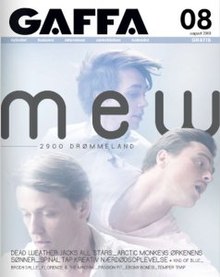History and profile
Gaffa has been published on a monthly basis since 1983. [3] The magazine is distributed to places such as educational institutions, record shops, libraries and cafés, as well as a small number to paying subscribers. [4] It features music news and notes, interviews, album reviews and upcoming concert schedules.
Gaffa's website, GAFFA.dk, was established in 1996. [5] Since December 2008 all back issues of the magazine are accessible online free of charge. [6]
In 2008 Gaffa launched GAFFA live, a concert overview for Denmark, Sweden and Norway. In 2009 Gaffa was launched in Sweden, GAFFA Sweden, and in 2011 in Norway, GAFFA Norway.
In April 2006, Gaffa launched a user-written music encyclopedia, GAFFApedia, as a subsection of its website. [7] Based on MediaWiki, it is similar to Wikipedia and covered by the Creative Commons Attribution-Noncommercial-Share Alike licence. [8] [9] GAFFApedia was closed in 2010.
GAFFA Awards
The GAFFA Awards (Danish: GAFFA-Prisen) are an annual event created in 1991 to hand out prizes for music achievements. Since 2010, the awards have been held at a large gala show in Copenhagen, in Odense (2017-2019) and in Aarhus Musikhuset since 2020. [10] [11] Categories include Album of the Year, Foreign Album of the Year, Singer of the Year and Foreign Singer of the Year. [12]
Since 2010, GAFFA’s Swedish readers have also voted for and celebrated their favourite artists through GAFFA Priset. [13] In 2012, GAFFA Norway similarly established its version of the awards. [14]
This page is based on this
Wikipedia article Text is available under the
CC BY-SA 4.0 license; additional terms may apply.
Images, videos and audio are available under their respective licenses.
